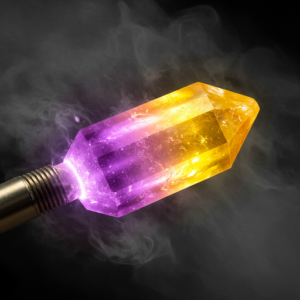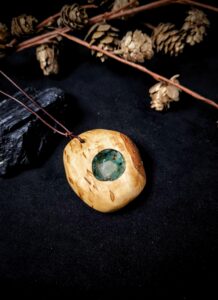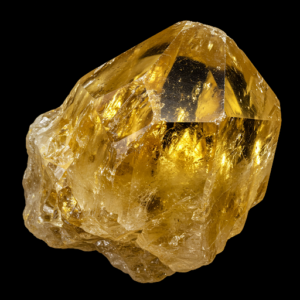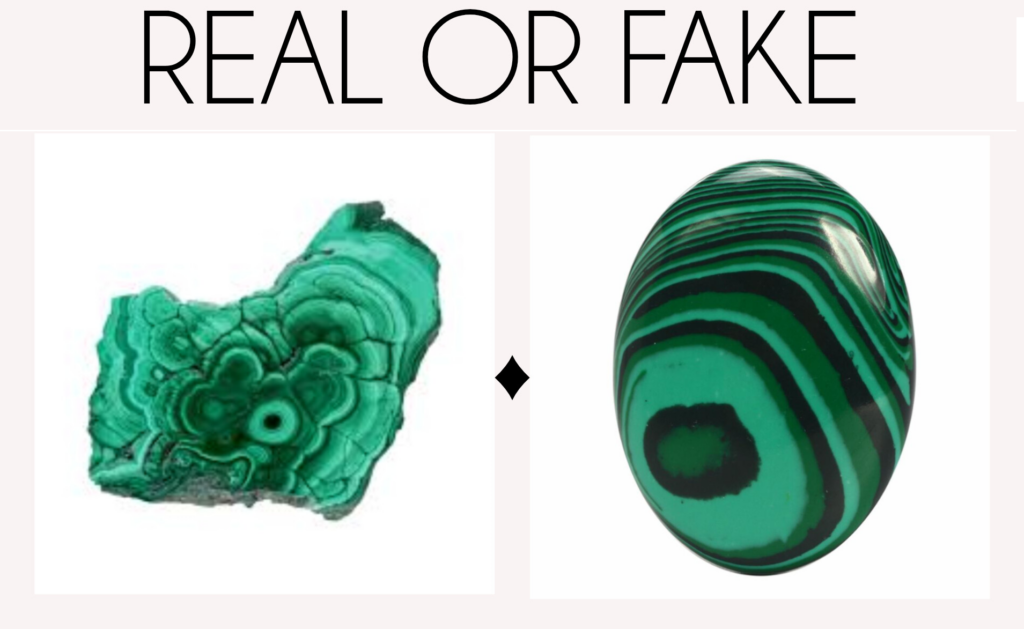Citrine, with its warm golden hues, is a captivating gemstone celebrated for its beauty and rich history. As the birthstone for November, citrine has been cherished across various cultures for its purported healing properties and symbolic meanings. This article delves into the origins, characteristics, historical significance, and metaphysical attributes of citrine, providing a comprehensive understanding of this remarkable stone.
Origins and Characteristics
Citrine is a variety of quartz distinguished by its yellow to orange coloration, which ranges from pale yellow to deep amber. The name “citrine” is derived from the French word “citron,” meaning lemon, reflecting its citrus-like appearance. Natural citrine is relatively rare; most citrine available in the market today is produced by heat-treating amethyst or smoky quartz, which alters their color to the desired yellow tones.

This gemstone is primarily sourced from countries such as Brazil, Madagascar, Russia, and the United States. Its durability, with a hardness of 7 on the Mohs scale, makes citrine suitable for various types of jewelry, including rings, necklaces, and bracelets.
Historical Significance
Throughout history, citrine has been associated with prosperity and protection. Ancient civilizations, including the Egyptians, Greeks, and Romans, utilized citrine for its ornamental and purported protective qualities. The Egyptians crafted citrine into talismans, believing it could safeguard the wearer from negative energies. The Greeks and Romans carved iconic images into citrine and fashioned them into jewelry and intaglio work. In Scotland, between 300 and 150 BC, citrine adorned the handles of swords and daggers, possibly serving both decorative and protective purposes.

Metaphysical Properties
Citrine is often referred to as the “merchant’s stone” due to its association with wealth and abundance. It is believed to attract prosperity and success, making it a favored talisman among business owners and entrepreneurs. Beyond its economic connotations, citrine is said to promote joy, positivity, and self-confidence. Its radiant energy is thought to dispel negative emotions, such as self-doubt and depression, fostering an optimistic outlook. Additionally, citrine is believed to enhance creativity and motivation, supporting individuals in manifesting their goals and aspirations.

In the realm of chakra healing, citrine is associated with the solar plexus chakra, the energy center linked to personal power and self-esteem. By balancing this chakra, citrine is thought to empower individuals, encouraging clarity in decision-making and strengthening personal boundaries.
Healing Attributes
Beyond its spiritual and emotional benefits, citrine is reputed to offer physical healing properties. It is believed to support digestive health, boost metabolism, and enhance overall vitality. Some practitioners of crystal healing suggest that citrine can help in detoxifying the body and improving circulation. While scientific evidence supporting these claims is limited, many individuals incorporate citrine into their wellness practices, drawn by its reputed energizing and revitalizing effects.

Citrine in Modern Jewelry
Today, citrine remains a popular choice in jewelry design, appreciated for its vibrant color and affordability compared to other gemstones. Its versatility allows it to be crafted into various styles, from classic to contemporary. Citrine’s warm tones complement both warm and cool color palettes, making it a favored gemstone for designers and consumers alike.
As the birthstone for November, citrine offers a personalized touch to jewelry pieces, making it an ideal gift for those born in this month. Its association with warmth and sunshine also makes it a thoughtful present during the colder seasons, symbolizing light and positivity.





